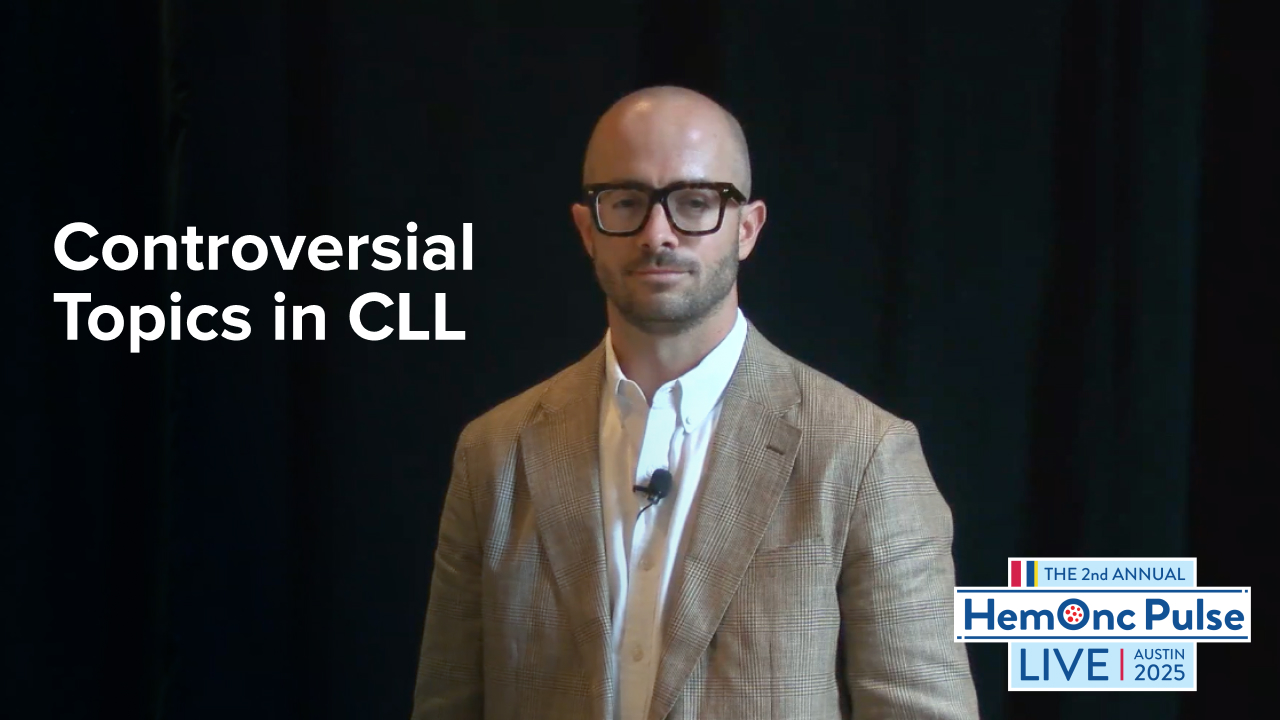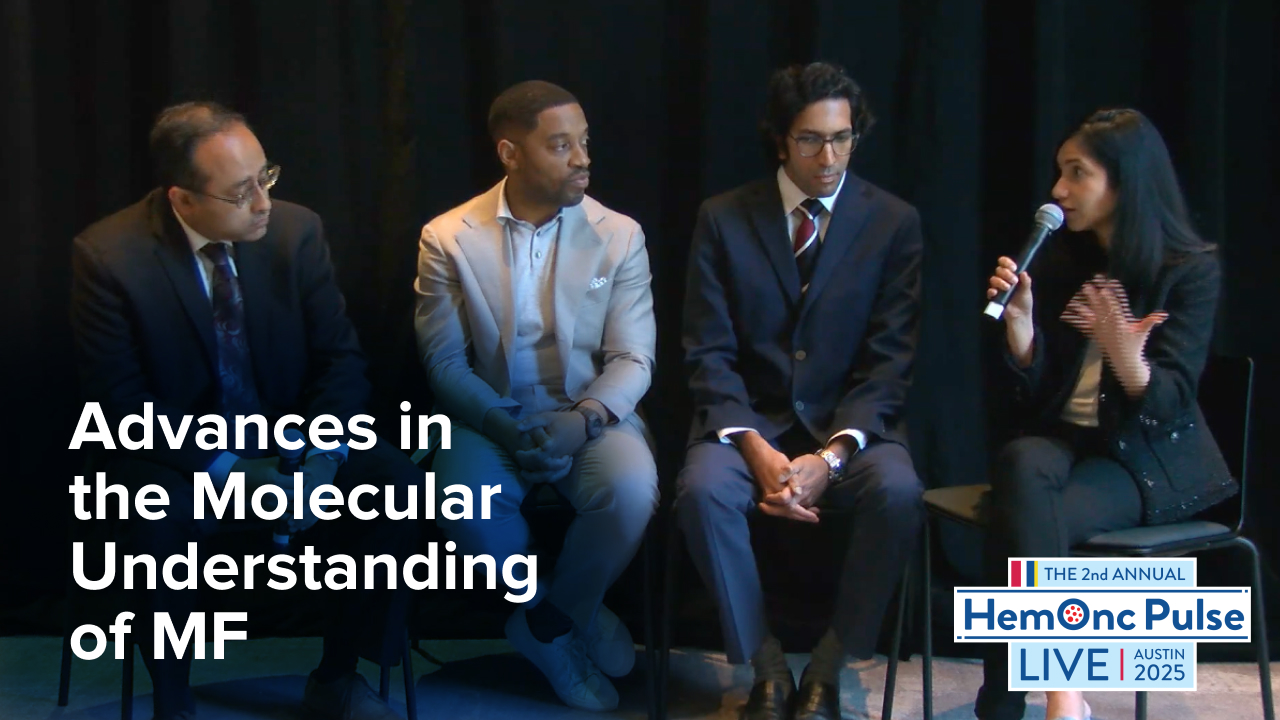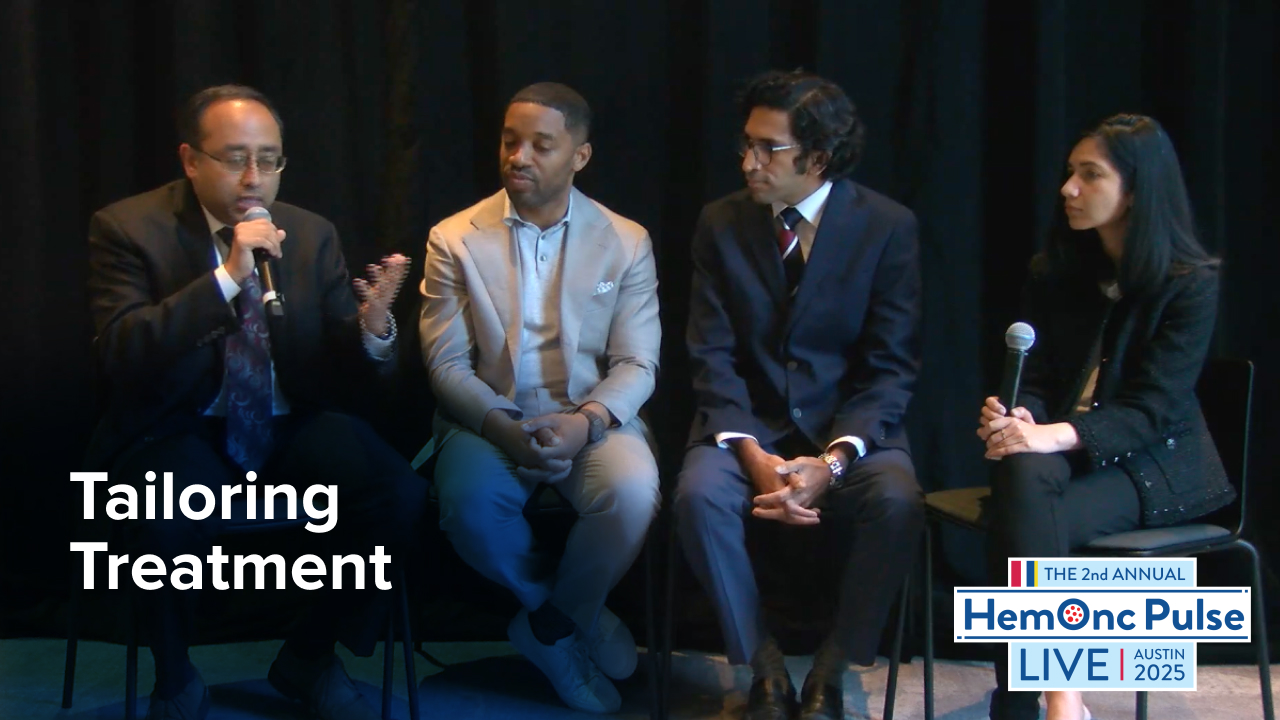MPN Roundtable: Which Patients Go Directly to Transplant?
By Ruben Mesa, MD, Naveen Pemmaraju, MD, Sanam Loghavi, MD, Olatoyosi Odenike, MD - Last Updated: June 7, 2024A roundtable discussion, moderated by Ruben Mesa, MD, of the Atrium Health Wake Forest Baptist Comprehensive Cancer Center, focused on the latest updates in myeloproliferative neoplasms (MPN). Dr. Mesa was joined by Naveen Pemmaraju, MD, of the University of Texas MD Anderson Cancer Center; Sanam Loghavi, MD, of the MD Anderson Cancer Center; and Olatoyosi Odenike, MD, of the University of Chicago Medicine.
In the third segment of the roundtable series, the panel discusses transplant for myelofibrosis (MF).
—
Dr. Mesa: Which patients go directly to transplant without having Janus kinase (JAK) inhibition?
Dr. Odenike: Now that we are firmly in the era of JAK inhibitor therapy for MF, it is exceedingly rare for patients to go directly to transplant without having been on a JAK inhibitor. If a patient walks in today with higher-risk MF and is transplant-eligible, it doesn’t mean they can immediately get a transplant. Patients have to be worked up for that. We have to get insurance approval and find a donor, and the patient may have symptomatic splenomegaly that needs to be addressed. We do these things in parallel; the patient will get medical therapy for MF while we simultaneously work them up for transplant.
There’s an exception to that general rule. Once in a while, I will have patients who may not have much of a spleen in terms of palpable splenomegaly, but their biggest issue is cytopenias such as transfusion-dependent anemia or thrombocytopenia. In those patients, I don’t see that putting them on a JAK inhibitor is going to have a lot of extra benefit if they were otherwise immediately eligible for transplant. I’d rather focus my efforts on trying to get them quickly to transplant.
Dr. Mesa: Is there a case for observation in any MF patient?
Dr. Pemmaraju: There is a group of low- and intermediate-1 risk patients who have essential thrombocytopenia (ET) or polycythemia vera (PV) and are still in the low-risk intermediate stage. Generally, those patients will have no or reduced spleen, minimal MPN symptom burden, no anemia, no major risk factors, and score either 0 or 1 on scoring systems. In our “Do No Harm” model, there is a segment of low-risk patients we can observe for decades. It’s imperative to figure out before treating who needs treatment and who doesn’t.
Dr. Mesa: How can we distinguish between early MF and low-risk MF?
Dr. Loghavi: Early MF can still be molecularly and genetically high-risk; it just hasn’t gotten to the point of being a fibrotic bone marrow yet. However, that patient may already have an ASXL1 mutation or a cytogenetically complex disease, and therefore is still destined to have a poor outcome. Those patients are the ones you want to watch closely and human leukocyte antigen-type earlier.
Dr. Mesa: What factors are most associated with a more aggressive phenotype?
Dr. Loghavi: TP53 is the most common secondary mutation that dictates a very poor outcome, and the most common phenotype in patients with blast phase MPN. We should use this to advocate for serial next-generation sequencing and serial monitoring of these patients, particularly if there’s a clinical indication that their disease is progressing. Given that we don’t have a great tool to treat TP53-mutated MPN, patients should get resequenced so that we can get them ready for transplant.






 © 2025 Mashup Media, LLC, a Formedics Property. All Rights Reserved.
© 2025 Mashup Media, LLC, a Formedics Property. All Rights Reserved.